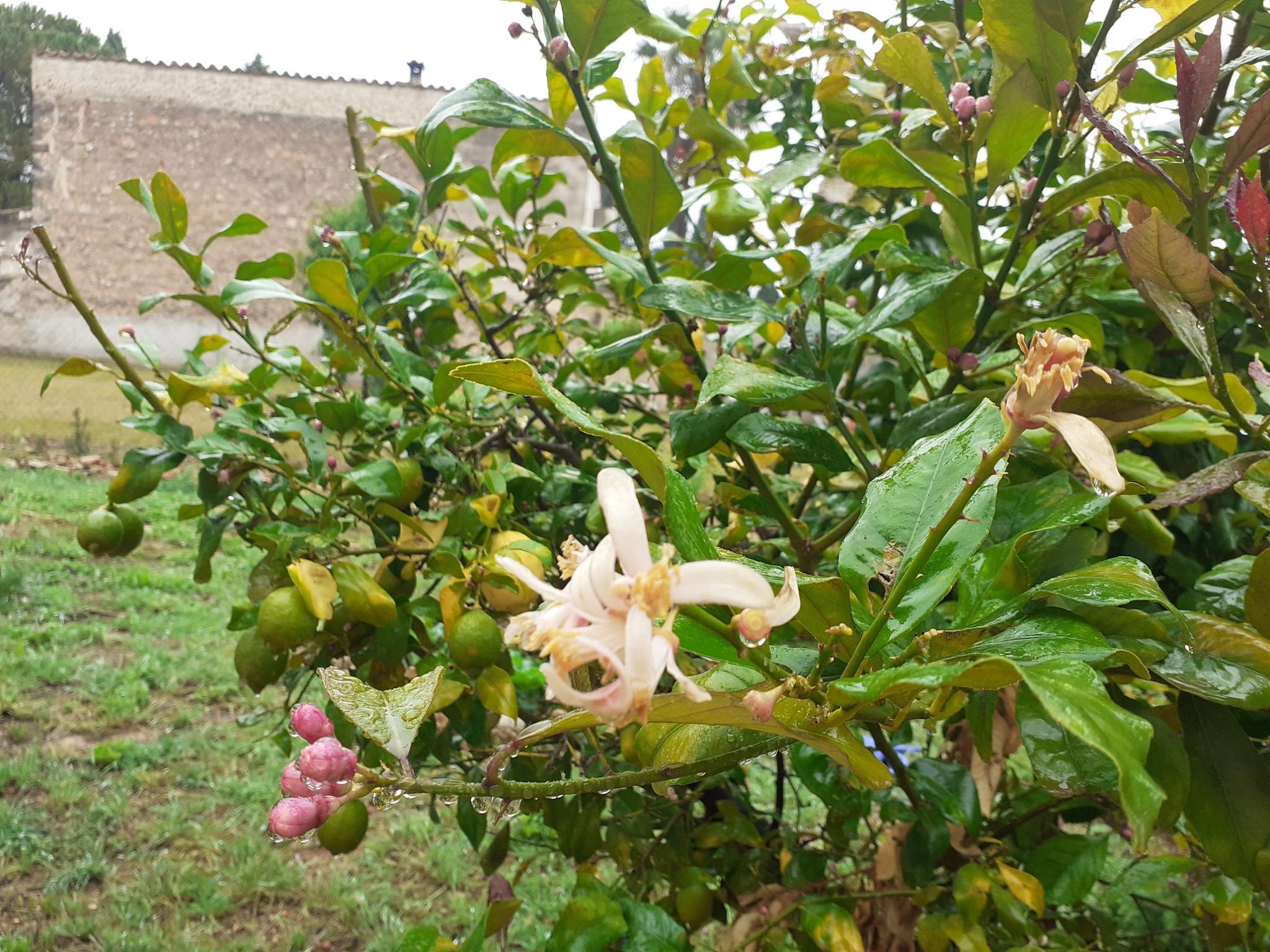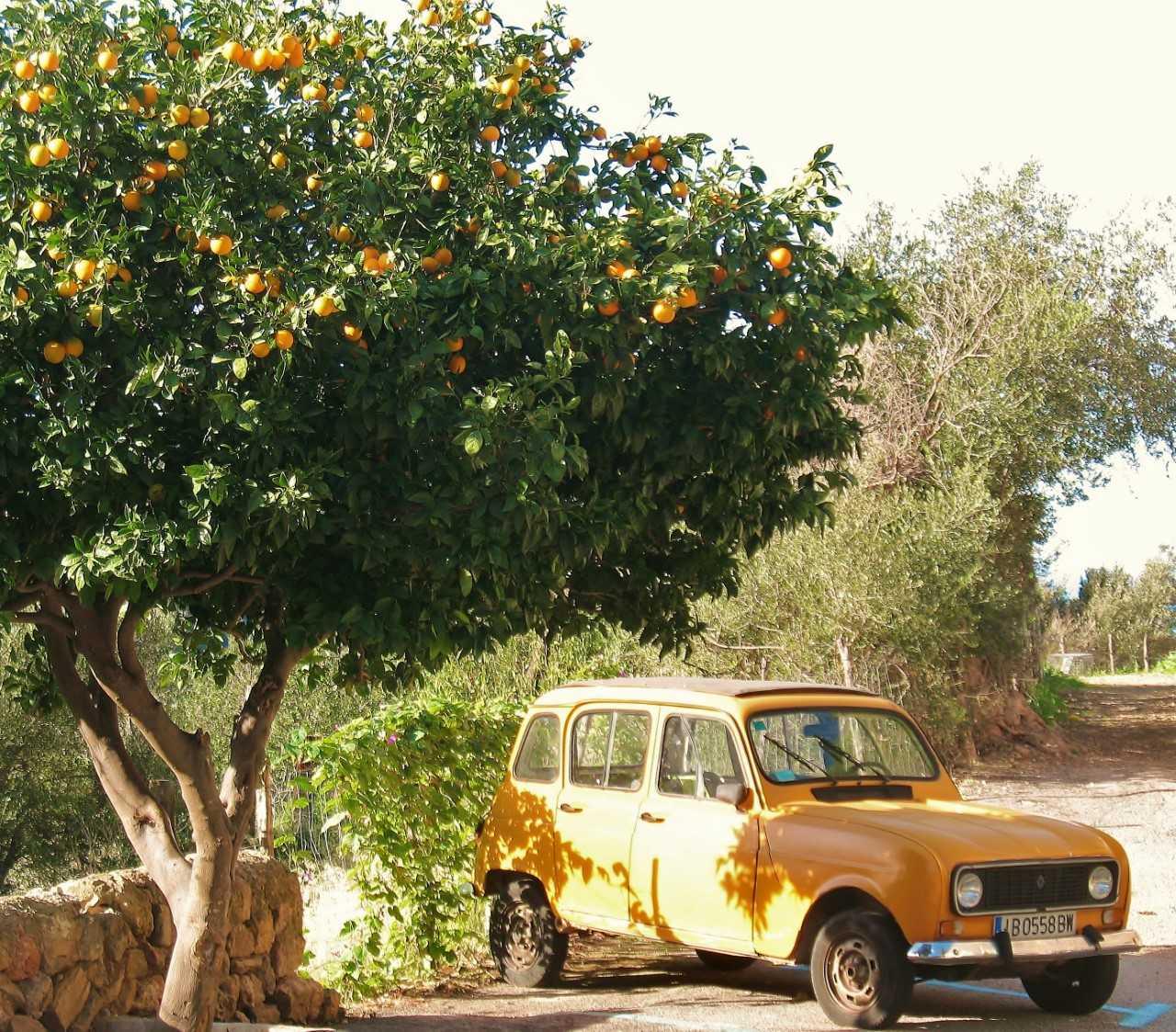 Orange.
Orange.
Here there are two schools of thought as to how one should prune citrus trees. One such is a really hard prune of the tree every three years, the other is to cut back a third of the tree every year. When there are only a couple of citrus trees in the average garden probably the latter, a normal light prune every year. Looking at most growth on the tree there is frequently the obvious three branches that one can cut the middle one away. There are also all those new shoots that grow out of the trunk often looking up within the tree, these will only fill up the space that is needed to allow the air to circulate in the very hot season, they rarely have flower and therefore no fruit so are best to eliminate whilst they are easy to just snip off. I admit it is one of the hardest things to do, cut back healthy looking growth but many a tree will bare larger and probably more fruit because of pruning every year. As the saying goes, spare the knife and spoil the tree.
 Lemon.
Lemon.
This saying that I have just quoted goes for all tree be they fruit trees or just ornamental and flowering trees, many of these of course are deciduous trees which are best cut back after the leaf has fallen and the sap is low. There are of course many evergreens that just drop leaves if and when so it is one of those on-going chores, firstly continually sweeping up leaves and then cutting back what simply gets in the way or spoils the shape of the tree.
So whilst on the subject of trees, don't think that just because you have a terrace or patio you can’t enjoy a tree or two. There are several trees that can be kept as a smaller potted plant and really look attractive on a balcony. Let's start with one of the most common ones, a bay tree, an evergreen and useful in the kitchen as well. A small bay can be cut into a standard shape encouraging a clean trunk with just a ball of leaves that is easy to keep in shape. It is one such tree that I have in my garden that I mentioned the other week that is now home to a blackbird so we try not to go too near it. We have seen both male and female blackbirds taking it in turns to sit on the nest or fly back with a worm or such hanging from its beak so there must now be a healthy little family living there in our bay tree. This is one of the wonders of nature and encourages us many a time to just sit and watch what is going on. Bay trees are probably one of the most prolific self-seeding trees, during the last months they have been heavy with blossom, over the years seedlings have popped up all over the place, some stand now just where they are, several I have been able to transplant into pots and given away and they have all come from the very first tree a neighbouring shepherd brought me from ’who knows where' 45 years ago. Here we can quote the Majorcan saying 'if you steal a snippet or cutting without asking permission of the owner, the plant is sure to thrive' I admit, I have several of those snippets in my garden.
Now another tree that can be as big or as small as you want therefore can start in a pot on the terrace, here I mention the rubber tree. Another evergreen with huge shiny leaves. In cooler climates, it is in fact considered an indoor plant. Here it thrives outside and will grow just about as tall as you want to allow it. It can be very attractive as a pot plant and is one of those’ cut a bit off and stick it in’. My first one was a gift as a potted plant over 20 years ago, as it grew and needed re-potting it was planted out in the garden where it has overtaken everything else around it. Another cutting from that was just popped into the garden and is every bit as big as the original. Two further ’stuck in' bits in plant pots have been given to a new gardener in Artá, which he intends to transplant into his garden. They really need very little attention or even much water in the heat of the summer. They will need a little more as a potted plant than in the garden.
All the other fruit trees are just coming into blossom now, Cherry is already fattening into fruit, and we just need to keep the birds off that one. Pears are in full bloom and Apples will soon be showing their flowers. Peach and Apricot also do very well in this climate. In most cases, these fruit trees are full of blossom before the leaves form.
 Nispero.
Nispero.
Probably one of the earliest fruits to ripen are those of the loquat, nispero in Spanish. The fruit is ripe now with trees just laden with their plum shaped orange fruit that grow in bunches and have three or four huge brown seeds. Any one of these seeds will grow into a tree if planted in the right place. The leaves are evergreen and to my way of thinking one of the untidiest trees in the garden with the ground always littered with its large fallen leaves that do not even seem to rot down on the compost heap. They are best just swept up and binned or burnt on the bonfire with other garden rubbish whilst we are still able to light fires in the garden. But it’s one of those fruits that just seem to invite you to stand under the tree and enjoy them, at least if you dribble their juice it can just fall onto the garden because to get the best flavour out of them bite into the outer skin, peel it back a bit and squeeze and suck the flesh out leaving behind the huge stones, there seems no better well-mannered way to really enjoy the nispero, just picked off the tree and eaten.

 Orange.
Orange. Lemon.
Lemon. Nispero.
Nispero.
No comments
To be able to write a comment, you have to be registered and logged in
Currently there are no comments.